
The remains of an old Augustan building with its once grand staircase © Kevin George Monterrubio |
|
Carteia Roman Ruins
Driving past Algeciras on the N340, a passer-by would never suspect that nestled behind Cepsa´s vast petrochemical plant is one of Andalucia´s most significant ancient heritage sites. Yacimiento Arqueológico Romano Carteia (Carteia Roman Archeological Site) is a strange theatre of juxtaposition, with Roman structures of varying preservation, medieval additions, and a backdrop of smoke-spewing chimneys. These fascinating contradictions alone make the site worth a visit, but its rich history remains the focus.
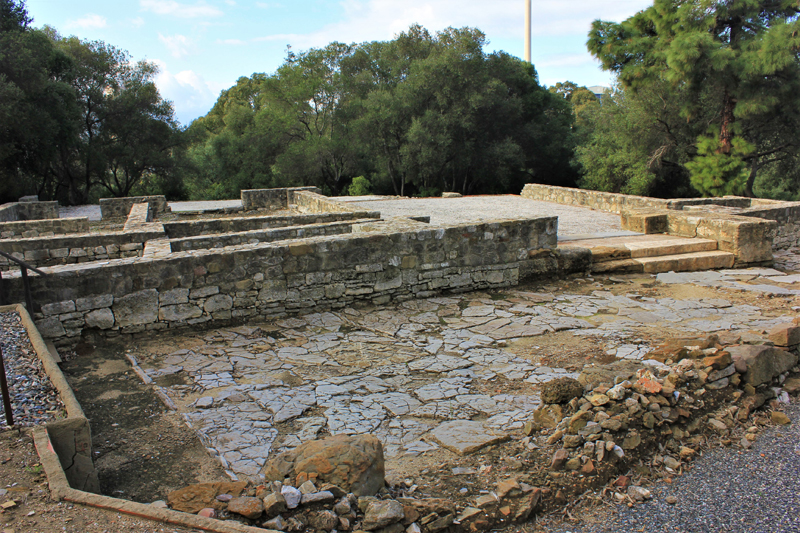
HISTORY
Carteia finds it origins in the C7th BC, when then Phoenicians established themselves in the Cerro del Prado, 2km northwest of the site. Three centuries later, the Carthaginians founded what we now know as Carteia. It was after the Punic Wars of the C3rd BC that the Romans established themselves in the city. People born here, children of Hispanic women and Roman soldiers, were not recognised by Rome as citizens, so in 171BC, Carteia´s 4000 inhabitants petitioned the Senate, and the town was granted colony status – making this the first Roman colony outside Italy. The town´s strategic position at the Mediterranean gateway established it as a major port; wood for boat-building, lead, iron and copper, and oranges, lemons and silver were among the riches than helped Carteia to flourish - over the next 580 years, its population boomed to 25,000.
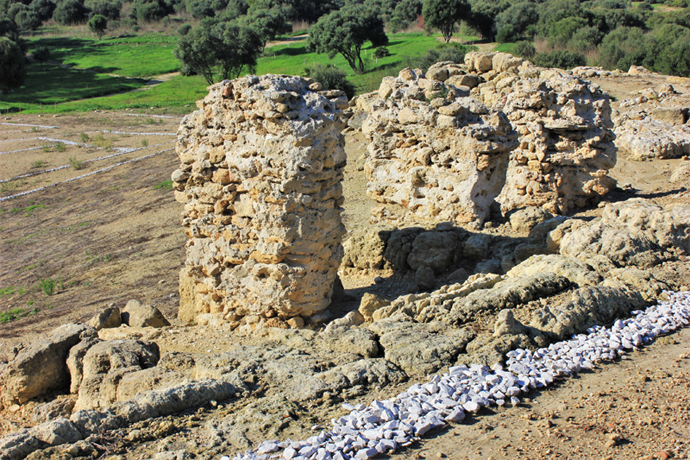
LAYOUT
Visitors to today´s Carteia must join a free hourly tour (10.00, 11.00, 12.00, 13.00, Tuesday – Sunday) to see the site, and may only touch ruins when encouraged by the guide. The tour route gives a good summary of civic life in Carteia through its architecture; visitors first encounter the baths, once made up of hot (cella soliaris), warm (tepidarium) and cold (fridgidarium) rooms, including an open air pool, and rooms for physical exercise and grooming which indicate the wealth of the town. Next is a former noble Roman house of the domus style, showing numerous rooms around an impressive atrium. We are told that the mosaic floor remains, but is left coated with dust for longevity. This is all seen from the original Roman street which visitors tread.
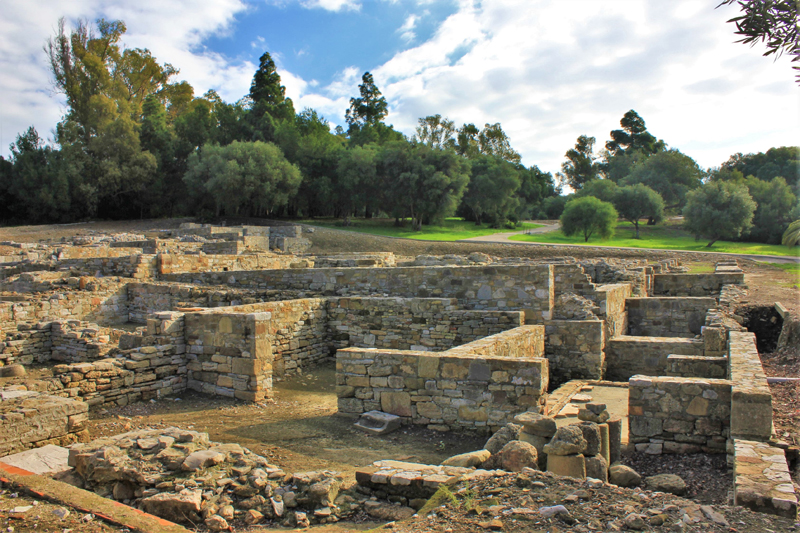
MEDIEVAL TOWER
At points, it´s easy to forget the industrial landscape surrounding the site; olive and eucalyptus trees surround the terraced ground as it slopes towards the sea. A Medieval Rocadillo watchtower, commissioned by Livadote at the end of the C16th, stands guard, like others along the coast. Its base is constructed from Roman stones dragged from elsewhere on the site – apparently Carteia has been neglected and recycled for centuries.
Bordering the beach in the bay are the old salt beds, into which imported tuna would have been layered with salt for preservation, with the remaining blood and guts used to make garum – not so appealing to a C21st tourist, but a luxury gentleman´s sauce in its day. Whilst imagining this major industry of Carteia, visitors can meanwhile look through a chain-link fence to see beach-goers´ parasols on the sands, and more enormous chimneys across the water.
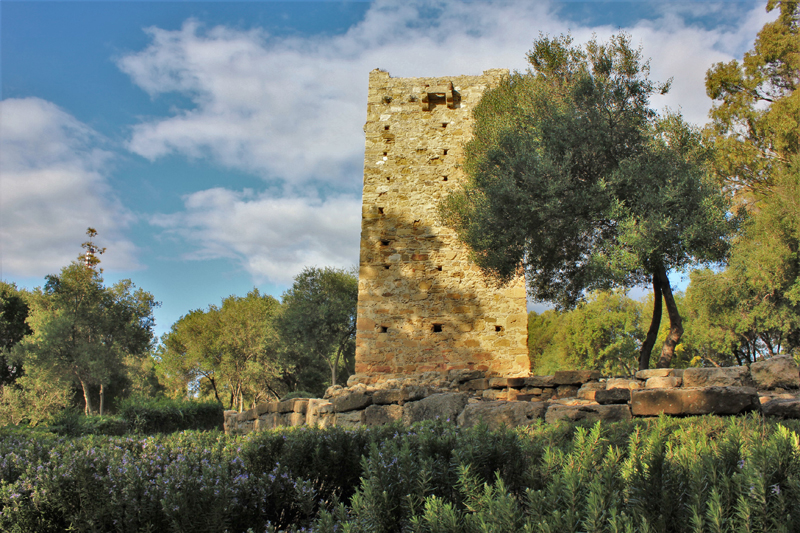
THE SECOND WORLD WAR
A WWII bunker, now Andalucia´s first bunker museum, shows how this now incongruous view was once capitalized upon for military purposes. The cramped underground space contains 1940s artifacts and photographs explaining this strategic position. A defensive line of over 100 bunkers were built beteen Tarifa and Sotogrande to guard against a potential British invasion of Spain from Gibraltar. Many can be seen on the coast. They were never used in anger. Read article from El Pais in English
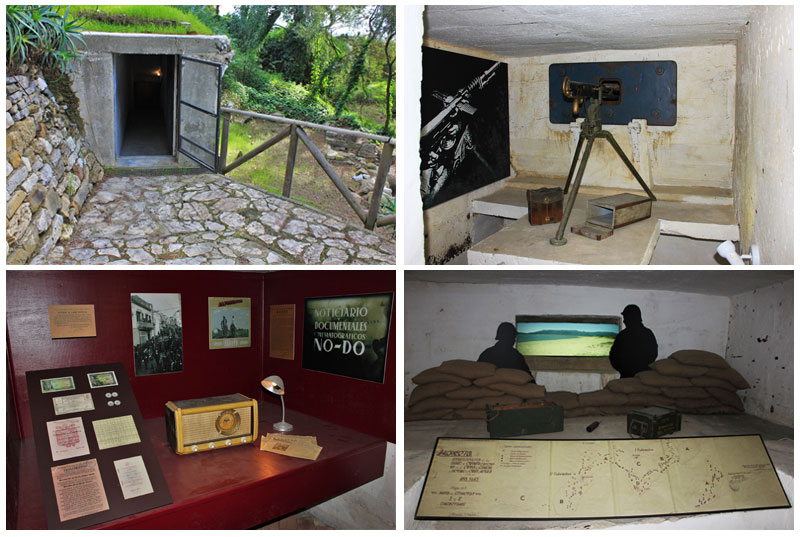
ROMAN TOWN LIFE
The opposite side of the site gives a greater sense of town planning and community life; the streets of the Forum (the centre of public life) are lined with market shops or macellum, and vast steps (which visitors can walk up) lead to the Temple – once a single cella elevated on a podium and surrounded by columns. Whilst the Temple´s ornamentation (bull promotos, capitals and cornices) have not survived, the tombs constructed by the Visigoths much later remain.

Here too we see how Carteia has been recycled over the ages; the foundations of C17th Cortijo Rocadillo (farmhouse), which was built over the Forum, can be clearly discerned. But no addition to the site can compare to the ever-looming Cepsa chimneys, throwing out industrial flames and reminding visitors that Carteia can never be fully discovered – by the time it was declared a protected site in 1968, Franco´s petrochemical plant had already sprung up over most of its remains. Today just 7% of Carteia has been excavated. But the Roman ruins and their industrial environs coexist in more ways than one: the financial support which the Junta de Andalucia (regional government) provides to the site is balanced with funding from Cepsa themselves – ironically, it is this which keeps the site free for visitors and ensures continued excavation.
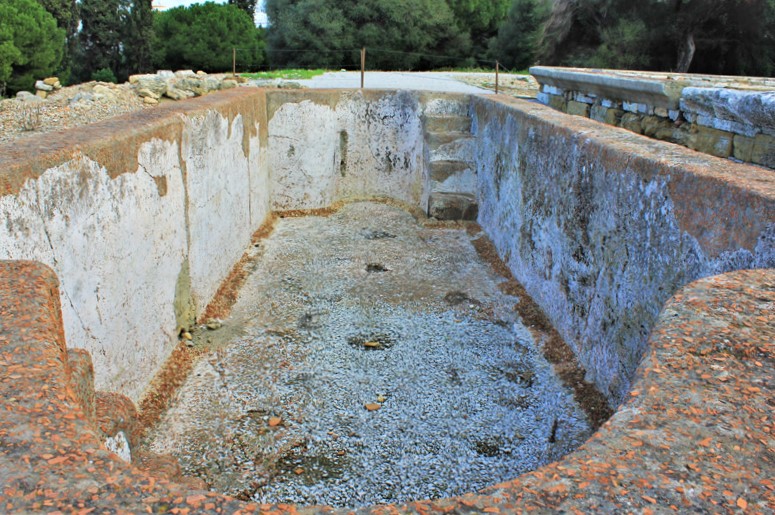
Whilst the Bay of Algeciras is hardly a tourist hotspot (except for those hopping on a boat to Morocco), Carteia is well worth a visit – both for ancient history fans, and for anyone wanting to take in the extraordinary juxtaposition which defines the space.
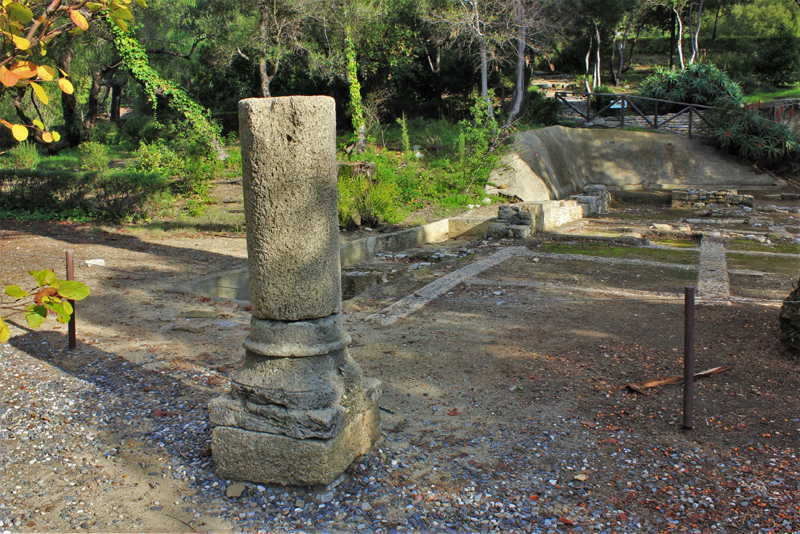
ACCESS AND OPENING HOURS
Yacimiento Arqueológico Romano Carteia can be reached by exits 115, 116 and 117 of the N340, heading towards Guadarranque.
Free parking is provided, and entry is free.
Open Wednesday – Sunday.
Guided tours at 10.00, 11.00, 12.00, 13.00.
Because the tour route is divided into two halves which meet at the entrance, it is often possible to join a tour midway through, on the half-hour.
Closed Monday, Tuesday and public holidays.
Note that the Municipal Museum on Calle San Felipe, San Roque (5km away) contains an exhibition of artefacts from Carteia.
PDF Leaflet
Download PDF leaflet in English here